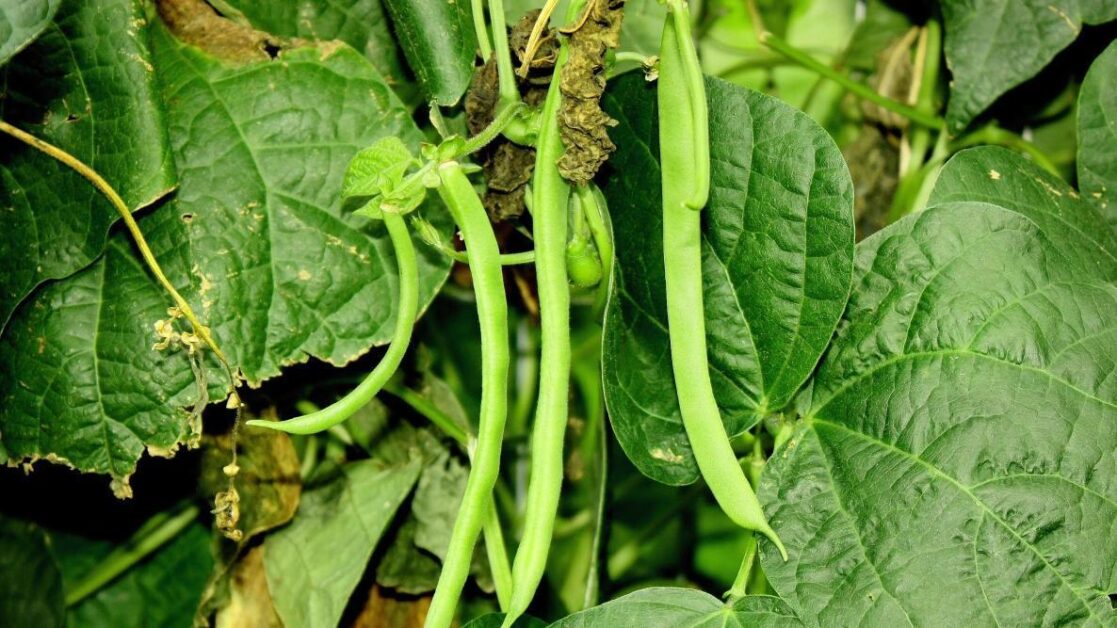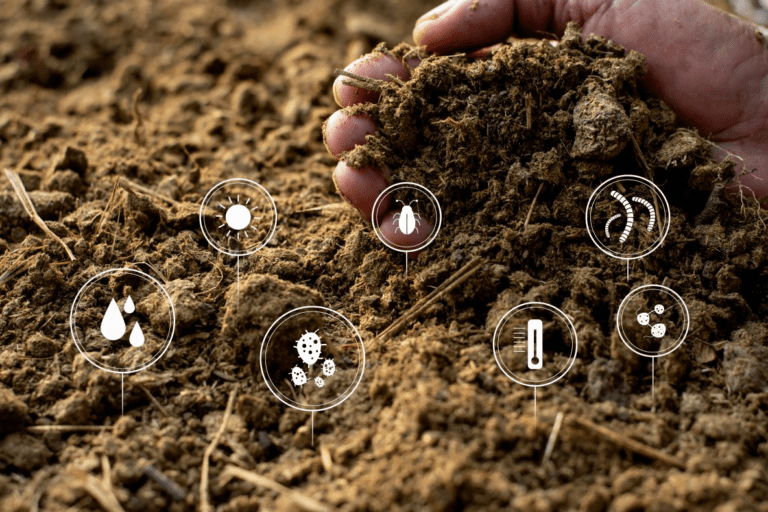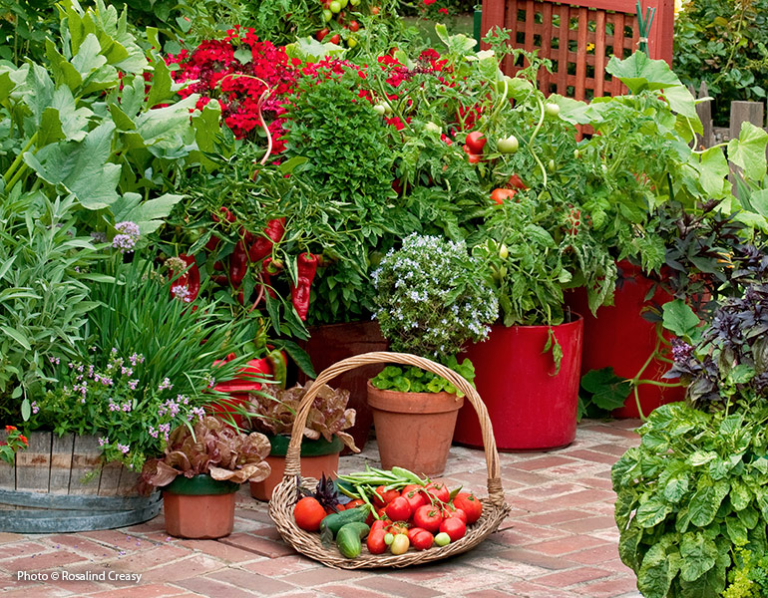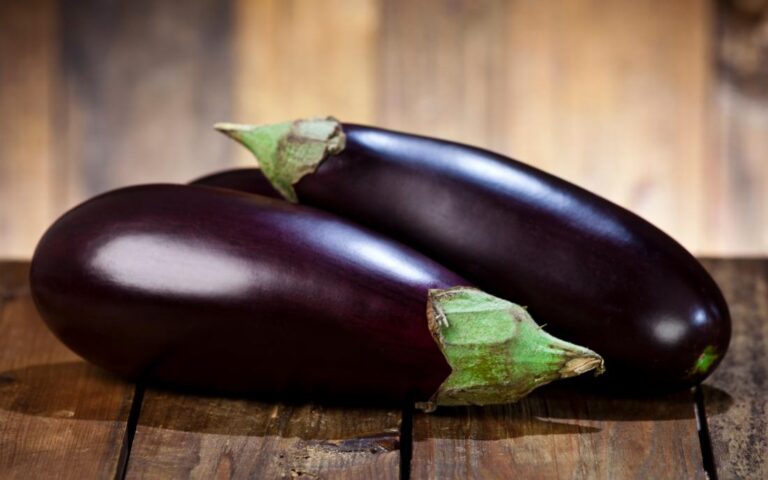Pole Beans: Everything To Know About Growing Vertical
Understanding the Basics of Pole Beans: A Comprehensive Guide
Pole beans, also known as climbing beans or runner beans, are a versatile and productive addition to any garden. These legumes are renowned for their ability to grow vertically, making them an excellent choice for small spaces or gardens with limited ground area. With proper care and attention, pole beans can flourish and provide a bountiful harvest throughout the growing season.
One of the key advantages of growing pole beans is their vertical growth habit. Unlike bush beans, which grow as compact plants spreading in all directions, pole beans possess long, vining stems that can reach heights of up to 10 feet or more. This vertical growth allows gardeners to utilize the vertical space in their garden beds or containers effectively. By using trellises, arbors, or other supportive structures, gardeners can train pole beans to climb upwards, maximizing their growing area and optimizing sunlight exposure for the entire plant.
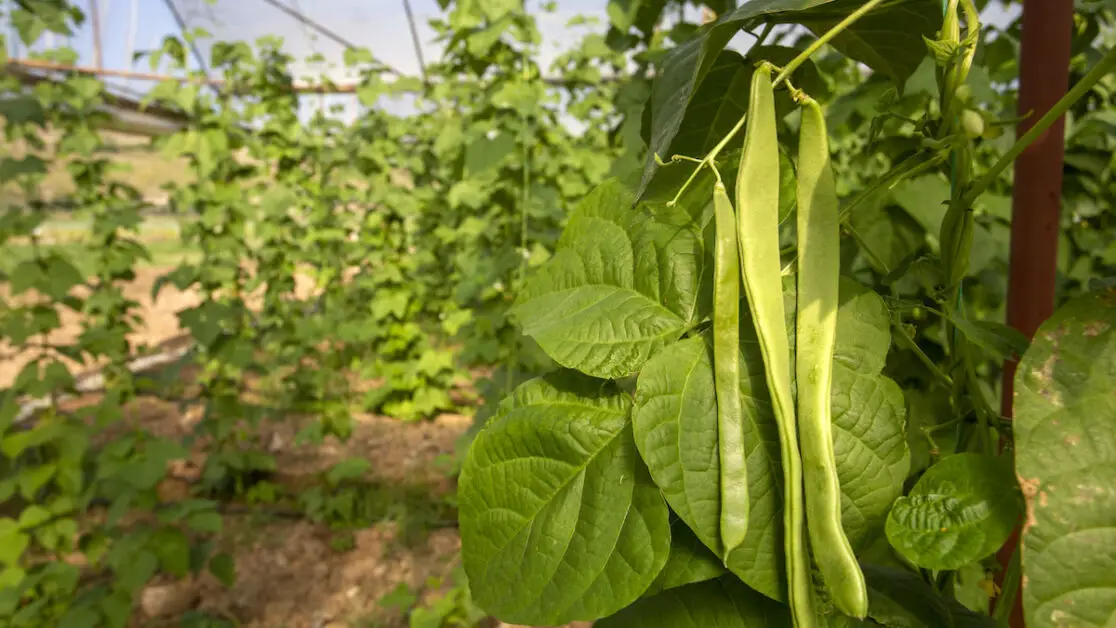
Another important aspect to consider when cultivating pole beans is their preferred growing conditions. These legumes thrive in warm climates with temperatures ranging between 70 to 85 degrees Fahrenheit, making them suitable for both spring and summer cultivation. Additionally, pole beans require well-drained soil enriched with organic matter, such as compost or aged manure, to enhance nutrient availability and promote healthy root development. Adequate sunlight, at least six to eight hours per day, is crucial for optimum growth and yield. By providing these essential growing conditions, gardeners can ensure the success of their pole bean plants and enjoy a productive harvest of delicious and nutritious beans.
Selecting the Right Variety of Pole Beans for Vertical Growth
When it comes to selecting the right variety of pole beans for vertical growth, there are several important factors to consider. First and foremost, it’s crucial to choose a bean variety that is specifically bred for vertical growth, as these varieties are more likely to thrive and produce abundant yields in a vertical gardening setting.
One popular variety that is often recommended for vertical growth is the Kentucky Wonder pole bean. Known for its vigorous climbing habit, this variety can reach impressive heights of up to 10 to 12 feet. The Kentucky Wonder pole bean is highly productive and offers a bountiful harvest of tender, flavorful beans. Another excellent option is the Blue Lake pole bean, which is renowned for its consistent yields and disease resistance. This variety is well-suited for vertical gardening and can be trained to grow on trellises or other supports easily. Overall, selecting a pole bean variety that is known for its vertical growth habit will set the stage for success in your vertical gardening endeavors.
Preparing the Soil: Essential Steps for Successful Pole Bean Cultivation
Preparing the soil is a crucial step in ensuring successful pole bean cultivation. The quality of the soil directly impacts the growth, yield, and overall health of the plants. Here are some essential steps to follow for preparing the soil:
1. Soil Testing: Before planting your pole beans, it is recommended to conduct a soil test. This test will provide valuable information about the soil’s pH level, nutrient content, and any deficiencies or imbalances that need to be addressed. You can either use a DIY soil testing kit or send a soil sample to a local agricultural extension office for professional analysis.
2. Soil Amendments: Based on the results of your soil test, you may need to amend the soil to optimize its fertility. Adding organic matter like compost, well-rotted manure, or peat moss can improve the soil structure and increase nutrient availability. Additionally, incorporating materials such as lime or sulfur can help adjust the pH level to the desired range for pole bean cultivation.
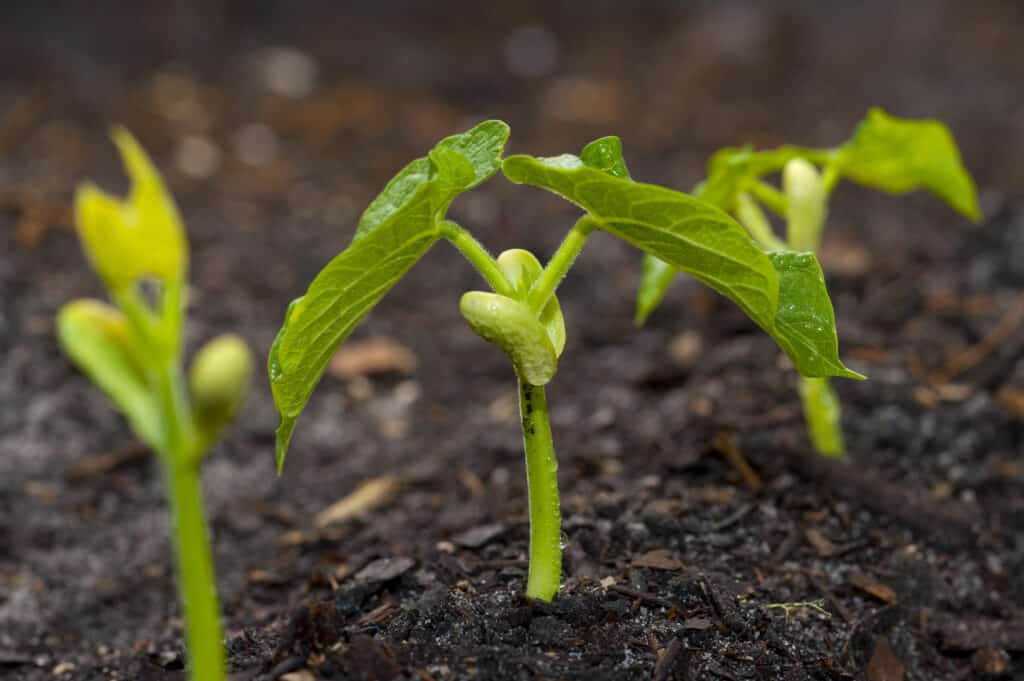
3. Soil Preparation: Start preparing the soil by removing any weeds, rocks, or debris that may hinder plant growth. Use a garden fork or tiller to loosen the top few inches of soil, ensuring good aeration and drainage. Avoid over-tilling, as it can disrupt the soil structure and lead to compaction.
4. Mulching: Consider applying a layer of organic mulch, such as straw or shredded leaves, around the pole bean plants after they have been initially planted. Mulching helps regulate soil temperature, conserves moisture, suppresses weed growth, and adds organic matter as it decomposes.
By following these essential steps for soil preparation, you can create an optimal growing environment for your pole bean plants. Ensuring nutrient-rich, well-drained soil will help support healthy growth, vibrant foliage, and bountiful harvests.
Planting Pole Beans: The Ideal Time, Spacing, and Depth
Planting pole beans requires careful consideration of the ideal time, spacing, and depth. To ensure successful growth and maximum yield, it is crucial to adhere to these guidelines.
Firstly, determining the ideal time for planting pole beans is essential. These warm-season crops thrive in temperatures between 70°F and 80°F (21°C and 27°C), making spring and early summer the optimal planting seasons. It is crucial to wait until the soil has warmed and all frost risks have passed to prevent damage to seedlings. By monitoring local weather patterns and soil temperature, gardeners can identify the perfect planting window.
When it comes to spacing, providing enough room for each plant to grow and develop is crucial. Pole beans require proper airflow to reduce the risk of diseases and ensure healthy foliage growth. A general rule of thumb is to plant pole beans approximately 4-6 inches (10-15 cm) apart in rows that are 2-3 feet (60-90 cm) apart. This spacing allows for efficient trellising and ample light exposure.
As for the depth of planting, it is important to plant pole bean seeds at an appropriate depth to promote strong root development. The seeds should be planted 1-2 inches (2.5-5 cm) deep in loose and well-draining soil. This depth enables the seeds to establish firm contact with the soil while still allowing them access to oxygen and moisture. Remember to cover the seeds gently with soil and ensure they are adequately watered to kickstart germination.
By understanding the ideal time, spacing, and depth for planting pole beans, gardeners can lay a solid foundation for healthy growth. These considerations, along with proper care and maintenance, will set the stage for a bountiful harvest of delicious pole beans.
Providing Adequate Support for Vertical Growth: Trellises, Arbors, and More
When it comes to growing pole beans, providing adequate support for their vertical growth is crucial. Without proper support, these tall and climbing plants can become tangled, prone to disease, and less productive. Trellises, arbors, and other vertical structures are excellent options for lending the necessary support for your pole beans.
Trellises are one of the most popular choices for supporting pole beans. These structures consist of stakes or posts, typically made of wood or metal, and a series of horizontal lines or wires. As the pole beans grow, they will naturally climb up the trellis, using their tendrils to latch onto the supports. This not only keeps the plants off the ground, reducing the risk of rot and pests, but also allows for better air circulation and sunlight exposure.
Arbors, on the other hand, offer a more decorative and visually pleasing option for supporting pole beans. These structures are typically arch-shaped, providing a beautiful focal point in the garden while also serving a functional purpose. Similar to trellises, arbors provide a framework for the pole beans to climb, promoting vertical growth and making harvesting easier. Additionally, arbors can create a shaded area beneath the bean vines, perfect for enjoying the outdoors on hot summer days.
In addition to trellises and arbors, there are other options available for supporting pole beans, such as bamboo stakes, teepees, or even a combination of different structures. The key is to choose a support system that suits your garden space, needs, and aesthetic preferences. Whichever option you decide on, providing the appropriate support for vertical growth will ensure healthy and productive pole beans throughout the growing season.
Watering Techniques for Optimal Pole Bean Growth
When it comes to watering pole beans for optimal growth, timing is crucial. These plants have a high water requirement, especially during the flowering and pod development stages. It is important to water consistently and deeply to ensure that the roots receive enough moisture. Generally, pole beans require about 1 inch of water per week, either from rainfall or irrigation. However, the frequency and amount of water needed may vary based on factors such as temperature, humidity, and soil type.
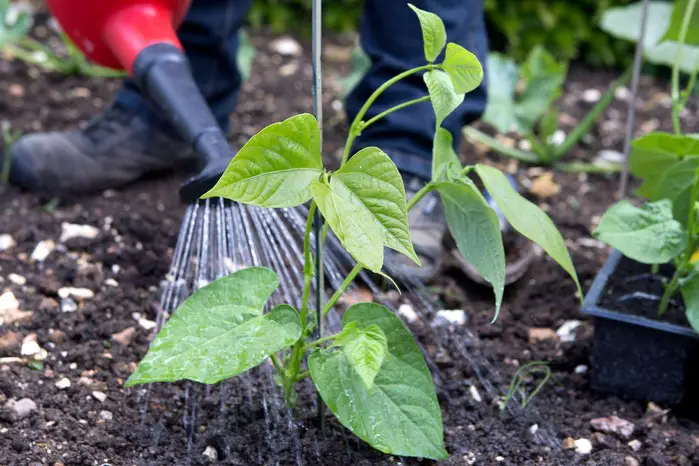
To determine if your pole beans need watering, you can check the soil moisture level by sticking your finger into the soil up to the second knuckle. If it feels dry at that depth, it’s time to water. It is best to water in the early morning or evening when the temperatures are cooler to minimize evaporation. Additionally, using a drip irrigation system or soaker hoses can help deliver water directly to the roots while reducing the risk of disease. Remember that overwatering can be as detrimental as underwatering, so it’s important to strike a balance and avoid waterlogged soil. By carefully monitoring and providing the right amount of water, you can ensure healthy and thriving pole beans.
Fertilizing Strategies to Promote Healthy Vertical Bean Plants
Achieving optimal growth and yield in vertical pole bean plants requires careful attention to fertilizing strategies. Proper fertilization not only provides essential nutrients for plant development but also ensures that the plants have the resources they need to resist diseases and pests. One effective approach is to incorporate well-balanced organic matter into the soil before planting. This can be achieved by adding compost, aged manure, or other organic amendments. These organic materials enrich the soil with nutrients, improve its structure, and enhance moisture retention, creating an ideal environment for healthy vertical bean plants.
In addition to organic matter, it is crucial to provide vertical pole bean plants with balanced nutrition throughout their growth cycle. This can be accomplished by using a balanced fertilizer that contains key nutrients such as nitrogen, phosphorus, and potassium. Nitrogen promotes leaf and stem growth, phosphorus stimulates root development and flowering, and potassium enhances overall plant health and disease resistance. It is advisable to choose a slow-release fertilizer to ensure a steady supply of nutrients over an extended period. Regularly applying a balanced fertilizer according to the manufacturer’s guidelines will provide the essential elements necessary for the robust growth and productivity of vertical pole bean plants.
Controlling Weeds and Pests in Vertical Pole Bean Gardens
Weeds and pests can be a major challenge in vertical pole bean gardens. Not only do they compete with the bean plants for essential nutrients, but they can also hinder their growth and reduce yield. Therefore, it is crucial to have effective strategies in place to control and manage these unwanted guests.
One of the most efficient methods of weed control in vertical pole bean gardens is mulching. Applying a layer of organic mulch, such as straw or wood chips, around the base of the plants can help suppress weed growth by blocking their access to sunlight. Additionally, mulch helps to retain soil moisture and regulate temperature, providing a favorable environment for the pole beans to thrive.
In terms of pest management, it is essential to closely monitor the plants for any signs of infestation. Regular inspection allows for early detection and intervention, which is key in preventing pests from causing significant damage. Implementing natural pest control methods, such as introducing beneficial insects like ladybugs or lacewings, can help establish a balance and effectively control the population of common pests like aphids or spider mites. Utilizing organic insecticidal soaps or neem oil can also help combat pests while minimizing harm to the environment.
Here is a table that shows the pests and their solution in vertical pole bean garden:
| Method | Description |
|---|---|
| Mulching | Apply organic mulch around pole beans to suppress weeds, retain moisture, regulate temperature, and deter pests like slugs. |
| Companion Planting | Plant marigolds, nasturtiums, or herbs around pole beans to repel pests and attract beneficial insects for natural pest control. |
| Row Covers | Use lightweight fabric covers to physically block pests like aphids and flea beetles from reaching pole beans. |
| Natural Predators | Encourage ladybugs, lacewings, and predatory wasps by providing diverse habitats to control aphids, caterpillars, and other pests. |
| Organic Pesticides | Apply organic pesticides derived from botanical extracts or oils for pest control without harming beneficial insects or the environment. |
Pruning and Training Pole Beans for Maximum Yield
Pruning and training pole beans is an essential practice for maximizing their yield and ensuring healthy growth. By selectively removing certain parts of the plant and guiding its growth in a controlled manner, gardeners can influence the bean plant’s productivity and efficiency. Pruning helps in maintaining the plant’s shape, improving airflow and light penetration, reducing disease susceptibility, and increasing nutrient uptake.
When it comes to pruning pole beans, it is important to begin the process once the plants have reached a height of about 6 inches. Start by removing any dead, damaged, or diseased foliage using clean pruning shears. Be cautious not to damage the main stem or healthy leaves during this process. Additionally, pruning encourages the development of lateral shoots, which ultimately leads to the formation of more bean pods. Pinching the tips of the main vines encourages branching and can significantly increase the overall yield. However, it is important to avoid excessive pruning as it can hinder the plant’s ability to produce energy through photosynthesis.
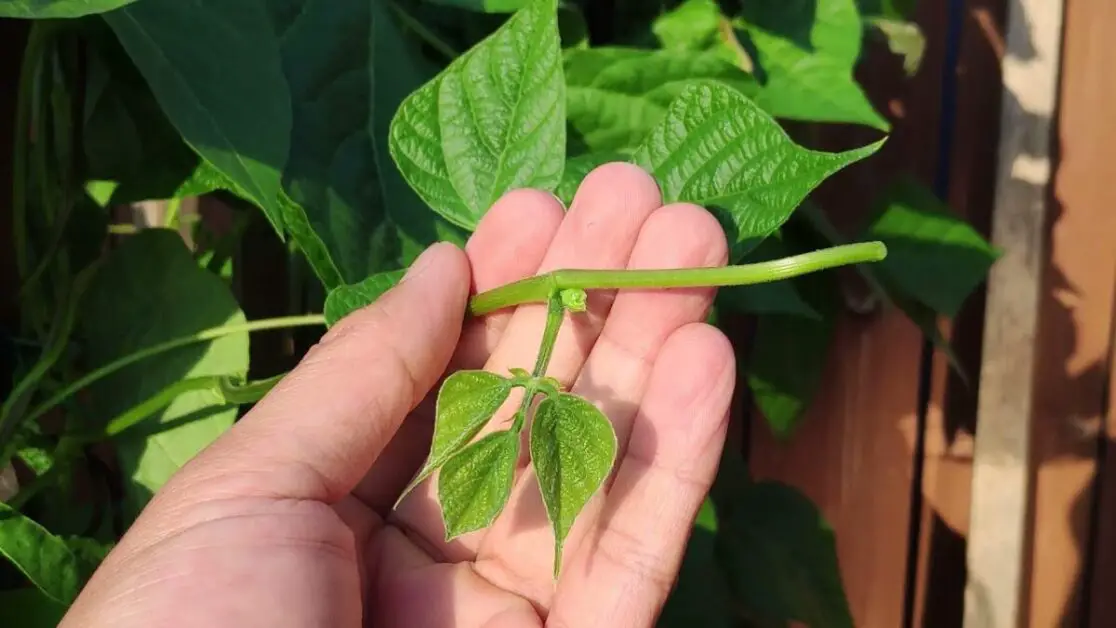
Training pole beans involves providing adequate support for the vines to grow vertically. This can be achieved through the use of trellises, stakes, or arbor structures. When setting up the support system, ensure that it is sturdy and can withstand the weight of the growing plants. As the pole beans start to climb, gently guide the vines onto the support using soft ties or twine. This helps prevent tangling and promotes upward growth. Regularly check the plants and adjust the ties as necessary to ensure they are securely attached to the support structure.
By implementing effective pruning and training techniques, gardeners can optimize their pole bean plants’ productivity and achieve a bountiful harvest. Taking the time to prune and train these vertical climbers not only enhances yield but also contributes to healthier plants and efficient space utilization in the garden. Stay tuned for more tips on maximizing the potential of your vertical pole bean garden as we explore the lifecycle of pole beans, from seed to harvest.
Understanding the Lifecycle of Pole Beans: From Seed to Harvest
As a gardener, understanding the lifecycle of pole beans is crucial for achieving a successful harvest. From their humble beginnings as seeds, pole beans go through several distinct stages until they finally yield the delicious and nutritious beans we eagerly anticipate.
The lifecycle of pole beans begins with the germination of the seeds. It is recommended to start the seeds indoors, around 4-6 weeks before the last frost date. This allows the young seedlings to develop strong roots and establish themselves before transplanting them into the garden. The ideal soil temperature for germination is around 70°F (21°C), and the seeds should be planted at a depth of about 1-2 inches (2.5-5 cm), with a spacing of around 4-6 inches (10-15 cm) between each seed.
Once the seeds germinate, the seedlings will enter the next stage of their lifecycle – the vegetative growth phase. During this phase, the seedlings will develop their first set of true leaves and start to grow rapidly. It is crucial to provide adequate water, sunlight, and nutrients to support their healthy growth. Regular watering and the addition of a balanced fertilizer can help promote robust foliage development and provide the necessary nutrients for optimal growth.
The next stage in the lifecycle of pole beans is the flowering stage. As the plants mature, they will produce beautiful and delicate blossoms. These flowers are essential for the subsequent formation of bean pods. Bees and other pollinators play a vital role in the pollination process, transferring pollen from the male flowers to the female flowers. Ensuring a diverse and accessible flower garden nearby can attract pollinators and enhance the chances of successful pollination.
After pollination, the progression to the final stage of the lifecycle begins – the pod development phase. This is when the young, tender pods start to form and grow on the plants. It is essential to monitor the progress of the pods closely and harvest them at the right time to ensure optimal flavor and texture. Generally, pole beans are ready for harvest around 60-70 days after planting, but this can vary depending on the specific variety and environmental conditions.
Understanding the complete lifecycle of pole beans, from seed to harvest, empowers gardeners to nurture their plants effectively and maximize their productivity. By providing the necessary care at each stage, gardeners can not only enjoy a bountiful harvest but also appreciate the fascinating journey these plants undertake as they transform from tiny seeds into thriving, bean-producing vines. So, let’s delve deeper into the different stages of pole bean growth and explore the best practices to ensure a successful and rewarding gardening experience.
Recognizing and Addressing Common Diseases in Vertical Pole Bean Gardens
Recognizing and addressing common diseases in vertical pole bean gardens is crucial for maintaining a healthy and productive crop. While pole beans are generally resilient, they can still fall victim to various ailments that can hinder their growth and yield. By being able to identify these diseases early on and implementing appropriate measures, gardeners can effectively manage and prevent further damage.
One common disease that affects pole beans is powdery mildew (Erysiphe polygoni). Characterized by a white, powdery coating on the leaves, stems, and pods, this fungal infection can weaken the plants and reduce their ability to photosynthesize, ultimately leading to stunted growth and lower yields. To counteract powdery mildew, it is recommended to space the plants properly to ensure sufficient airflow, as the disease thrives in humid conditions. Additionally, removing and disposing of infected plant debris and applying appropriate fungicides can help control and manage the disease.
Another disease that can impact pole beans is bacterial blight (Xanthomonas campestris pv. phaseoli). Symptoms of bacterial blight include water-soaked lesions, yellowing leaves, and wilting stems. The disease is often spread through contaminated seed or infected crop residue. To prevent the spread of bacterial blight, it is essential to use disease-free seeds and practice proper crop rotation. In cases of infection, removing and destroying affected plants is crucial to prevent further contamination. Regular application of copper-based fungicides can also help manage the disease effectively.
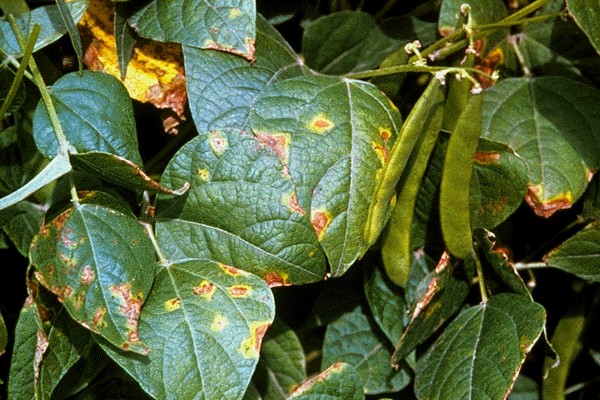
By recognizing and addressing common diseases in vertical pole bean gardens promptly, gardeners can protect their crops and ensure a bountiful harvest. However, prevention is always the best approach. Implementing good gardening practices such as proper spacing, crop rotation, and using disease-free seeds can go a long way in minimizing the risk of diseases. Moreover, regular monitoring and inspection of plants for symptoms can help catch issues before they escalate, allowing for timely intervention and better crop management overall.
Harvesting Pole Beans: The Right Time and Techniques
When it comes to harvesting pole beans, timing is crucial to ensure optimal flavor and texture. The right time to harvest pole beans depends on the variety and desired use. Generally, pole beans are ready to be picked when the pods are firm, crisp, and elongated, yet still tender.
To determine if the beans are ready for harvest, gently squeeze the pods. If they feel plump and snap easily, it’s a good indication that they are at their peak. Avoid letting the pods become overmature, as this can result in tough and stringy beans. Regularly checking and harvesting the beans every few days is recommended, as this promotes continuous production and helps prevent the beans from becoming woody.
When harvesting pole beans, it’s essential to use proper techniques to minimize damage to the plants and ensure ongoing growth. To harvest the beans, gently hold the stem near the base of the pod and pull it downward, keeping the vine secure with your other hand. It’s crucial to avoid yanking or tearing the pods, as this can harm the plant and reduce future yields. If you encounter any beans that have become overly mature or overlooked, it’s best to remove them from the plant to redirect energy toward developing new pods. By practicing mindful harvesting techniques, you can enjoy a bountiful harvest of flavorful and tender pole beans for your culinary creations.
Preserving and Storing Pole Beans for Long-Term Use
Preserving and storing pole beans properly is crucial for extending their shelf life and enjoying their nutritional benefits throughout the year. Whether you have a bountiful harvest or want to take advantage of seasonal sales, knowing the right techniques for long-term preservation can make a significant difference.
One of the most common methods for preserving pole beans is canning. By using the pressure canning method, you can ensure that your beans are properly sterilized and sealed, preventing the growth of harmful bacteria. To can pole beans, start by thoroughly cleaning them and removing any blemishes or damaged parts. Then, blanch the beans in boiling water for a few minutes before transferring them to sterilized jars. Add a bit of salt or acidity, such as vinegar or lemon juice, to each jar to enhance the flavor and act as a preservative. Finally, place the jars in a pressure canner and process them according to the recommended time and pressure for your specific altitude. The canned pole beans can then be stored in a cool and dark place for up to a year, providing you with a convenient and nutritious pantry staple.
Companion Planting: Maximizing Pole Bean Growth with Compatible Crops
Companion planting is a smart and strategic approach to maximize the growth and productivity of your pole beans. By pairing them with compatible crops, you can create a beneficial environment that promotes healthy plant growth and deters pests.
One excellent companion plant for pole beans is the corn plant. These two crops have a mutually beneficial relationship, as the pole beans will climb up the tall corn stalks, using them as natural trellises. In return, the pole beans help the corn by fixing nitrogen in the soil, which is essential for the corn’s growth. This symbiotic relationship enhances the overall health and yield of both crops, making it a win-win combination.
Another great companion for pole beans is the marigold plant. Marigolds emit a strong scent that repels many pests, including nematodes and aphids, which commonly attack pole beans. Planting marigolds near your pole beans acts as a natural pest control method, reducing the need for chemical interventions. Additionally, marigolds attract beneficial insects like bees and ladybugs, which help with pollination and further protect your pole beans.
Troubleshooting Common Challenges in Vertical Pole Bean Gardening
When it comes to vertical pole bean gardening, there can be a few challenges that gardeners may encounter. One common issue is poor germination. If you find that your pole beans are not sprouting as expected, it could be due to several factors. Firstly, ensure that you are planting fresh seeds from a reputable source. Older seeds may have a lower germination rate. Secondly, pay attention to the soil temperature. Pole beans prefer warmer soil for optimal germination, so make sure the soil has reached a minimum temperature of 60°F (15.5°C) before planting. Lastly, keep the soil consistently moist but not overly wet. Too much water can lead to seed rot, while too little water can hinder germination.
Another challenge that gardeners may face is nutrient deficiency in pole bean plants. Nutrient deficiencies can manifest in various ways, such as yellowing leaves, stunted growth, or poor pod development. To address this issue, it is essential to provide adequate fertilization. Pole beans are heavy feeders and require a nutrient-rich soil to thrive. Incorporating organic matter, such as compost or well-rotted manure, into the soil before planting can help improve nutrient levels. Additionally, regular application of a balanced fertilizer, following the manufacturer’s instructions, can help ensure that the plants receive the necessary nutrients for healthy growth. Remember to monitor the plants closely and adjust the fertilization regimen accordingly, as excessive nutrient levels can also be detrimental to the plants.
Watch this vodeo to learn further about pole beans in a vertical garden.
Inspiring Vertical Pole Bean Garden Designs for Small Spaces.
When it comes to creating vertical pole bean gardens in small spaces, there are several inspiring designs that can help maximize your growing area without sacrificing aesthetics. One design option is the use of trellises or arbors, which not only provide necessary support for pole beans but also add an attractive vertical element to your garden. By utilizing structures that allow the beans to climb, you can successfully grow pole beans in limited space while creating a visually appealing display.
Another design idea for small vertical pole bean gardens is the use of hanging containers or baskets. These can be hung from walls, fences, or even from overhead structures, allowing the beans to grow vertically without taking up valuable ground space. Additionally, the use of hanging containers allows for easy maintenance and harvesting, as the beans are within arms reach and well-organized.
Whether you choose to utilize trellises or hanging containers, designing a vertical pole bean garden in a small space can provide you with a bountiful harvest while adding visual interest to your gardening area. These designs allow for maximum utilization of space and can be modified to fit your personal style and preferences.
• Trellises or arbors provide support for pole beans and add a vertical element to the garden
• Hanging containers or baskets can be hung from walls, fences, or overhead structures
• Vertical gardens save valuable ground space
• Easy maintenance and harvesting with hanging containers
• Designs can be modified to fit personal style and preferences
Can pole beans be grown in containers?
Yes, pole beans can be grown in containers as long as they have adequate support for vertical growth. Choose compact varieties and provide a trellis or support structure for them to climb.
How often should I water pole beans?
Pole beans require regular watering to keep the soil consistently moist. Water deeply once or twice a week, depending on the weather and soil conditions.
Can I grow pole beans indoors?
While it is possible to grow pole beans indoors, it can be challenging due to their need for vertical support and sufficient sunlight. It is recommended to grow them in outdoor spaces with proper sunlight and support structures.
Do I need to prune pole beans?
Pruning pole beans is not necessary for their growth and productivity. However, removing any damaged or diseased parts can help promote healthier plants.
How long does it take for pole beans to mature?
The time it takes for pole beans to mature can vary depending on the variety and growing conditions. On average, pole beans take around 60-70 days from planting to harvest.
Can I save seeds from pole beans for future planting?
Yes, you can save seeds from pole beans for future planting. Allow the pods to fully mature and dry on the plant before harvesting the seeds. Store them in a cool, dry place for next year’s planting.
What are some companion plants that work well with pole beans?
Some companion plants that work well with pole beans include corn, cucumbers, and carrots. These plants can provide shade, support, or deter pests, enhancing the growth of pole beans.
How can I prevent pests from damaging my pole beans?
To prevent pests from damaging your pole beans, regularly inspect the plants for signs of pests and take immediate action. Use organic pest control methods, such as handpicking, applying neem oil, or introducing beneficial insects.
Can I grow pole beans vertically without a trellis?
While it is possible to grow pole beans vertically without a trellis, it is not recommended. Without proper support, the plants may become tangled, susceptible to diseases, and yield less produce.
Can I grow pole beans alongside tomatoes?
Yes, pole beans can be grown alongside tomatoes. The beans can use the tomato plants as support, while the beans’ nitrogen-fixing abilities can benefit the tomatoes’ growth. Just ensure the plants have enough space to grow without overcrowding each other.

